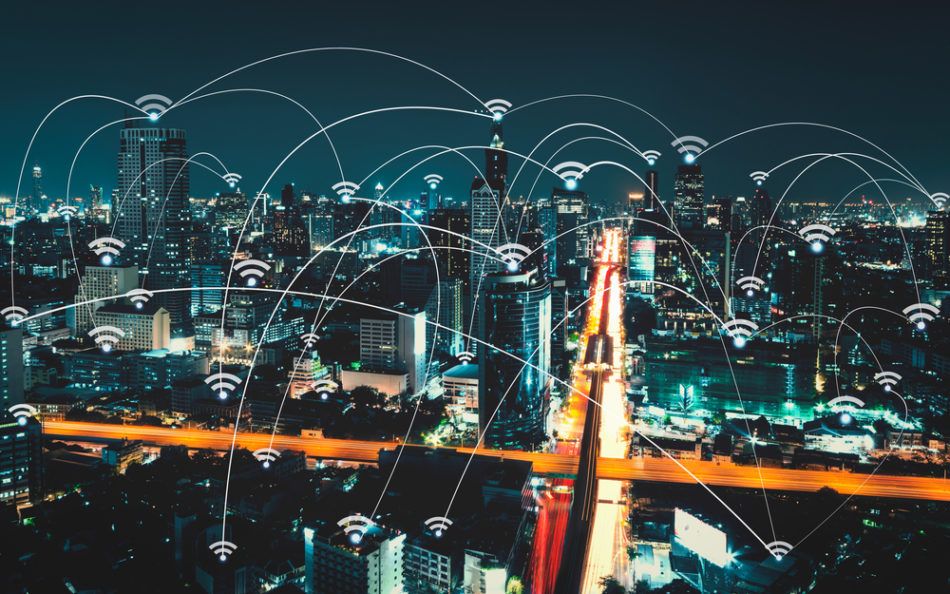What is Target Wake Time?
Target Wake Time (TWT), one of WiFi 6’s most clever features, helps devices conserve power, and prevents channel contention. Here’s why enterprises...

The rapid growth of enterprise IoT ecosystems pushes businesses to adopt WiFi 6 — now.
Enterprises today are tasked with supporting a skyrocketing number of WiFi-connected devices. For every American, there are fully 8 devices connected to the internet — and that number will double in the next four years. The average employee carries 2 to 3 wireless devices and the emerging adoption of wearables in the workplace should see that number grow in the coming years.
For its part, Garter projects the number of IoT devices to reach 25 billion by 2020, with its economic impact exceeding $2 trillion globally. Some $15 trillion will be invested in IoT between 2017 and 2025.
Mobility has essentially changed the way enterprises foster productivity. But connected devices are useless in the absence of a strong, reliable connection. Today’s WiFi networks must be capable of handling the increased device density, congestion, and intermingling of applications that come with our newly connected world. One of the biggest challenges enterprises will face when attempting to capitalize on the IoT will be a lack of adequate network infrastructure.
Thankfully, IT stakeholders have something closely resembling a silver bullet in the push for suitably powerful connectivity: WiFI 6 (a.k.a. 802.11ax). WiFi 6 offers faster speeds, greater range (in some cases), better performance in demanding environments, and enhanced power efficiency for devices. In short, it’s tailor-made for enterprises seeking to improve the performance and efficacy of their IoT applications. CIOs and IT teams should waste no time preparing to upgrade their wireless networks for the next iteration of connectivity.
WiFi 6 comes with speeds of up to 9.6 Gbps compared to WiFi 5’s 3.5 Gbps — a whopping 3x increase. But in reality, these “max” speeds will rarely, if ever, be utilized in most traditional enterprise environments. The real performance gains are to be found in the efficiency of high-traffic networks. This is a wildly important benefit for businesses bringing more and more connected devices into their daily operations.
Although most IoT devices don’t typically use a lot of bandwidth, there tend to be a lot of them — and in many instances, they need to work flawlessly. The constant traffic that IoT devices give rise to can cause network channels to bloat and run less efficiently. And because switches must clear transmission channels before they send or receive data, wait times are increasing while speeds are in decline.
WiFi 6 access points have the speed and capacity to meet enterprise needs by using a technique called Orthogonal Frequency-Division Multiple Access (OFDMA). This allows access points to send simultaneous transmissions by splitting their transmission channels into subchannels. Although this doesn’t intrinsically increase data rates, it does allow more transmissions to be sent at the same time, which is guaranteed to reduce device wait time for simple tasks, thus improving network speeds. In fact, some research suggests that, when compared with the previous generation, WiFi 6 can deliver a data speed increase of 4x per user.
Additionally, WiFi 6 also has improved multi-user, multiple input, multiple output (MU-MIMO) functions. MU-MIMO technology allows an access point (AP) to communicate with multiple devices at the same time, rather than broadcasting to every device individually. As of now, MU-MIMO allows APs to communicate with four devices at a time, but WiFi 6 will allow devices to communicate with up to eight without any hits to network speeds.
One of the other marquee functions of WiFi 6 is it’s Target Wake Time (TWT) feature, which enables devices to determine when and how frequently they will power on to send or receive data. This feature was specifically designed for large-scale, wide-distribution IoT deployments. TWT allows devices to conserve power with much greater efficiency.
Given all of these benefits, a majority of enterprises should be adopting WiFi 6 into their networks as soon as possible. Luckily, IEEE has designed WiFi 6 to be backward compatible with previous standards and older devices. As such, most enterprises won’t need to do a full rip and replace in order to experience lightning-fast enterprise WiFi.
WiFi 6 is a gamechanger. Enterprises will be forced to upgrade eventually, so the smartest ones will adapt sooner rather than later. However, they should be sure to proceed thoughtfully — IoT ecosystems bring with them a glut of security concerns that must be addressed. More devices on a network equate to more entry points for attackers to exploit. That’s why it’s important for forward-thinking CIOs and IT teams to start their transition to WiFi 6 with the help of a trusted partner like Turn-key Technologies (TTI).
With three decades of experience designing networks that are as secure as they are powerful, Turn-key Technologies has the resources and expertise necessary to ensure that enterprises stay ahead of the curve. To capture all the benefits of the IoT — and avoid its pitfalls — enterprises should consider adopting WiFi 6. For those who’re unsure of where to start, there’s no better place than TTI.
Contact us today to learn more about what WiFi 6 can do for your enterprise.

Target Wake Time (TWT), one of WiFi 6’s most clever features, helps devices conserve power, and prevents channel contention. Here’s why enterprises...

WiFi 6 promises to improve wireless speeds, but obsolete cabling could place a bottleneck on your network. WiFi 6 — previously known as 802.11ax — is...

A new generation of WiFi 6 access points is here; the Aruba 500 series is a game changer. Star Trek’s USS Enterprise is the ultimate vessel for...